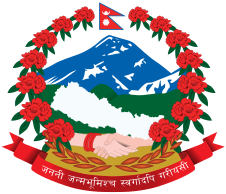Trip to Everest

Mount Everest, known as "Sagarmatha" in Nepali and "Chomolungma" in Tibetan, is the Earth's highest mountain above sea level. Here is some essential information about Everest:
-
Location: Mount Everest is part of the Himalayan mountain range and straddles the border between Nepal and the Tibet Autonomous Region of China.
-
Elevation: Mount Everest stands at 8,848.86 meters (29,031.7 feet) above sea level, although its height may change slightly due to geological and climatic factors.
-
Climbing Mount Everest:
- Mount Everest is a popular destination for mountaineers from around the world. Climbing the mountain is a challenging and potentially dangerous endeavor.
- The two primary routes for climbing Everest are the South Col route from Nepal and the North Col route from Tibet. The South Col route is more commonly used.
- Climbers need to obtain various permits and permissions, and it is typically required to join an organized expedition team with experienced guides.
-
Best Time for Climbing: The best time for climbing Mount Everest is during the pre-monsoon season (April to May) and the post-monsoon season (September to October), when the weather and climbing conditions are most favorable.
-
Challenges: Climbing Everest is physically and mentally demanding due to extreme altitudes, harsh weather conditions, crevasses, avalanches, and the risk of altitude sickness. Climbers need to be well-prepared and acclimatize properly.
-
Permits: Climbers must obtain several permits, including a climbing permit from the government of Nepal or the Tibet Autonomous Region. The cost of permits can be substantial.
-
Record Ascents: Mount Everest has been summited by thousands of climbers, and some have achieved remarkable feats, such as Sir Edmund Hillary and Tenzing Norgay, who made the first confirmed successful ascent in 1953.
-
Environmental and Cultural Considerations: The region around Everest is ecologically sensitive, and it's important to follow Leave No Trace principles and respect local culture and customs when visiting the area.
-
Base Camps: Everest has two base camps: the South Base Camp in Nepal and the North Base Camp in Tibet. These serve as the starting points for most climbing expeditions.
-
Safety and Regulation: In recent years, there has been increased focus on safety and regulation to manage the number of climbers and reduce environmental impact on the mountain.
Climbing Everest is a lifelong dream for many mountaineers, but it's an endeavor that requires extensive training, preparation, and financial commitment. It's essential to respect the mountain, the environment, and the local communities while pursuing this adventure.
Everest Base Camp Trek Outline Itinerary.
Day 01: Kathmandu Arrival (1380 m)
Welcome to Nepal! Airport pickup and transfer to hotel. Relaxation after a long flight. Evening briefing of Everest Base Camp trek preparation and equipment check.
Day 02: Fly Kathmandu to Lukla (2810m) and trek to Phakding (2652m).
Exhilarating 35-min mountain flight to Lukla. Start your trekking journey through the Dudh Koshi valley to the village of Phakding. Overnight at local mountain lodge lodging.
Day 03: Phakding to Namche Bazaar (3446 m)
Walk through pine forests and a suspension bridge across the Dudh Koshi River. Inclined ascent up to Namche Bazaar, the Sherpa capital town and gateway of the Everest region.
Day 04: Rest at Namche—trek to Syangboche (3880m)
Acclimatization day with a trek to Syangboche airstrip. The itinerary includes the Everest View Hotel with views of mountains. Visits to markets, museums, and the Sherpa culture of Namche.
Day 05: Namche Bazaar—3867m to
Journey through rhododendron forests with spectacular views of mountains. Visitation of world-famous Tengboche Monastery, spiritual center of the Khumbu region. Evening prayer with views of mountain sunset.
Day 06: Tengboche to Dingboche (4260m)
Through stands of birches, across the Imja River. Up at the village of Dingboche with good views of Lhotse, Island Peak, and Ama Dablam. High-altitude acclimatization starts.
Day 07: Rest at Dingboche—side excursion at Chukung Village
Acclimatization day with a potential hike up to the village of Chukung. Dramatic views of Makalu, Lhotse, and Island Peak. Back in Dingboche for overnight acclimatizing and rest.
Day 08: Dingboche to Lobuche (4930 m)
Pass through alpine deserts. Cross memorials at Thokla Pass in memory of lost trekkers. Up to Lobuche village with views of Khumbu Glacier and mountains.
Day 09: Lobuche to Gorakshep (5140m) - Everest Base Camp (5364m)
Early morning trek to Gorakshep. Trek in the afternoon to the ancient Everest Base Camp. See the base camp of the world's tallest mountain. Return to Gorakshep lodge.
Day 10: Gorakshep to Kala Patthar (5545m) - Descend to Pheriche (4230m)
Pre-dawn trek to Kala Patthar at sunrise over Mount Everest. Ultimate views of the highest mountain in the world. Trek back to Pheriche with an overnight stop.
Day 11: Namche Bazaar to Kathmandu
Long trek along familiar trekking routes. Through Tengboche, Phunki Tenga, and beautiful rhododendron forests. Back in vibrant Namche Bazaar with comfortable accommodation.
Day 12: Lukla to Kathmandu
Final trekking day in the valley of Dudh Koshi. Cross suspension bridges and village ruralities. The trek ends in Lukla with a farewell dinner with the trek team as well as with the guides.
Day 13: Fly back to Kathmandu
Early morning flight back to Kathmandu from Lukla. Transfer to hotel. Free time, shopping in Thamel, and optional sightseeing. Farewell dinner with successful trek completion.
Day 14: Transfer to airport for departure
Hotel checkout and airport transfer at overseas departure. Conclusion of memorable Everest Base Camp trekking experience with lifetime Himalayan memory and accomplishments.


.png)
.png)






